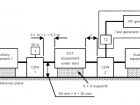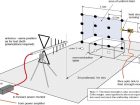Electromagnetic Compatibility: EMC
This refers to the characteristics of a piece of equipment or a system in terms of not causing electromagnetic interference with other equipment, and, at the same time, functioning correctly in the face of disturbances that may be caused by other systems within its working environment.
Electromagnetic compatibility can be summed up in two concepts:
- EMI: Electromagnetic Interference (EMISIONS)
- EMS: ElectroMagnetic Susceptibility (INMUNITY)

[sta_anchor id=”ondas”]Sources of electromagnetic waves[/sta_anchor]
The origin of electromagnetic waves can be industrial or natural, and can be either intentional or unintentional:
Intentional:
- Radio and TV broadcast transmitters
- Mobile phones
- Radars, etc.
Examples of unintentional:
- Lightning
- Variators (speed, frequency)
- Contactors, relays, etc.
Importance of electromagnetic compatibility
Electromagnetic compatibility is increasingly important due to the following factors:
- Increase in amount of electronic equipment both in industry and at home.
- Larger and more complex equipment.
- Increase in presence of telecommunications systems (radio, mobile phones, etc.).
- New working frequencies of equipment.
[sta_anchor id=”tipos”]Types of EMC Phenomena[/sta_anchor]
- EMISSION: The level of electromagnetic interference that an electrical or electronic device introduces into the environment as a result of its operation.
- IMMUNITY: Ability of a device to function properly in an environment with a certain level of electromagnetic disturbance. In both cases, electromagnetic disturbances can be RADIATED, if they are propagated through the air, or CONDUCTED if they are propagated through cables.
Elements of an electromagnetic phenomenon

Therefore, when an EMC problem arises, the possible solutions are the following:
EMISSION: Suppress the interference at the source.
EMISSION and IMMUNITY: Make the coupling path ineffective.
IMMUNITY: Make the receiver less sensitive to the interference.
[sta_anchor id=”normas”]Types of standards[/sta_anchor]
- Military and Civil
- European: EN, ETSI
- Nationals: UNE-EN, BS, NF, VDE, ANSI, VCCI
- Basic Standards
- Generic Standards
- Product Rules
- Product Family Standards
A brief description of each standard and what that standard defines can be found below.
- BASIC STANDARDS: These define the test methods, as well as the limits to be met and the test levels to be applied, except in exceptional cases. They are usually indicative.
- GENERAL STANDARDS: These are applied in the absence of a product standard/product family standard adapted to the equipment or system. They otherwise follow the same methodology as product standards/product family standards.
- PRODUCT STANDARDS / PRODUCT FAMILY STANDARDS: These define the limits to be met and the test levels to be applied. They refer to the basic standards for the test procedure.
[sta_anchor id=”requisitos”]Requirements in the military sector[/sta_anchor]
- Conducted Emissions Power Cable
- Conducted Susceptibility Power Cable
- Conducted Emissions Interconnection Cable
- Conducted Susceptibility Interconnection Cable
- Conducted Emissions Antenna Conductor
- Conducted Susceptibility Antenna Conductor
- Emissions: Ground Impedance Coupling
- Susceptibility: Ground Impedance Coupling
- Radiated Magnetic Field and Radiated Electric Field
- Susceptibility to Magnetic Field and Susceptibility to Electric Field
Requirements in the civil sector
- Radiated Emissions
- Conducted emissions
- Harmonics
- Flicker / Flicker
- Radiated Susceptibility
- ESD (Electrostatic Discharge)
- Electrical Transients (EFT / Bursts)
- Surges
- Susceptibility Driven
- Gaps, interruptions and voltage variations
- Quantum Key Distribution - 7th November 2022
- Conducted Immunity - 20th May 2019
- Electrical transients Test - 2nd May 2019



